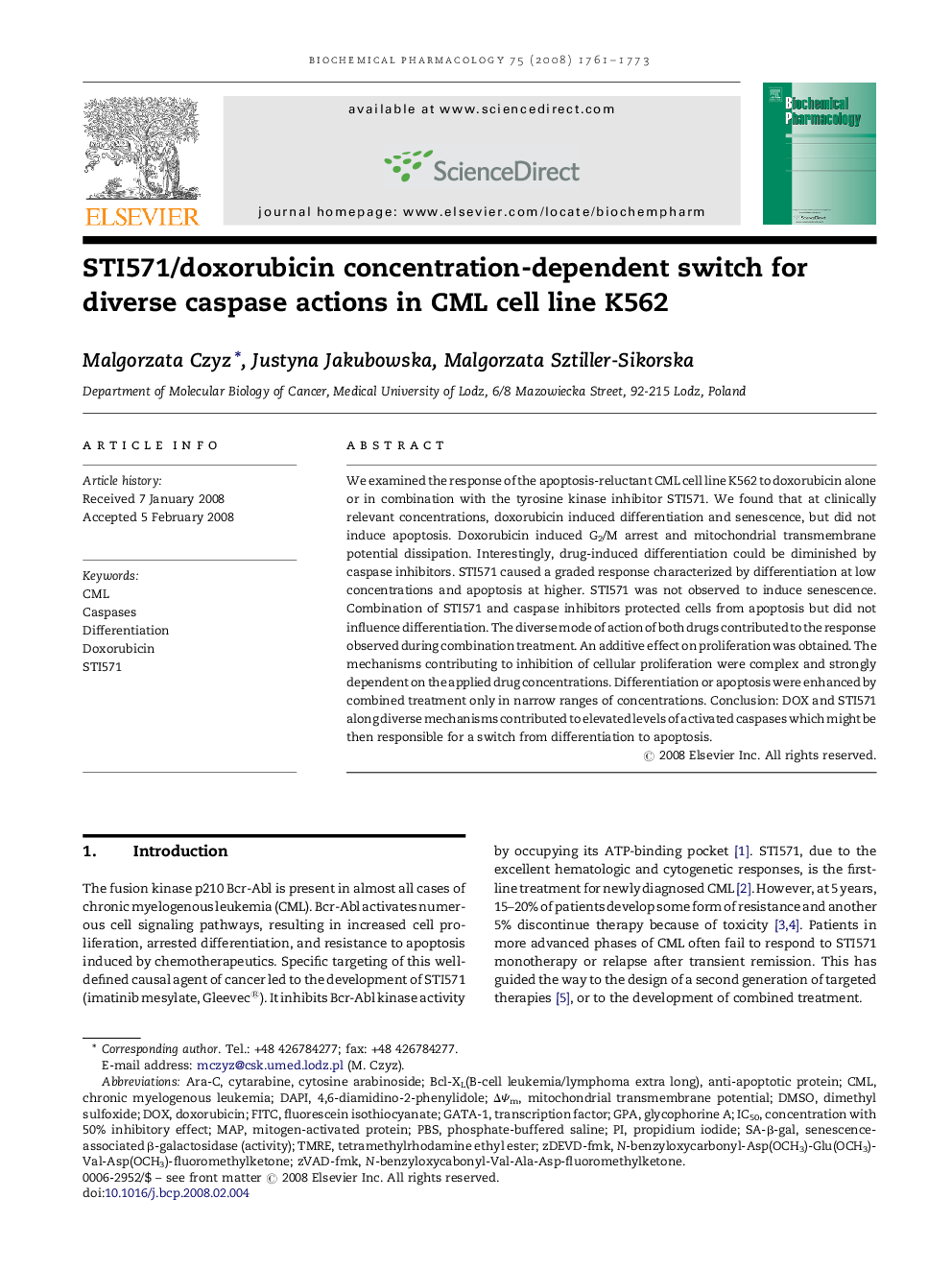| Article ID | Journal | Published Year | Pages | File Type |
|---|---|---|---|---|
| 2515298 | Biochemical Pharmacology | 2008 | 13 Pages |
Abstract
We examined the response of the apoptosis-reluctant CML cell line K562 to doxorubicin alone or in combination with the tyrosine kinase inhibitor STI571. We found that at clinically relevant concentrations, doxorubicin induced differentiation and senescence, but did not induce apoptosis. Doxorubicin induced G2/M arrest and mitochondrial transmembrane potential dissipation. Interestingly, drug-induced differentiation could be diminished by caspase inhibitors. STI571 caused a graded response characterized by differentiation at low concentrations and apoptosis at higher. STI571 was not observed to induce senescence. Combination of STI571 and caspase inhibitors protected cells from apoptosis but did not influence differentiation. The diverse mode of action of both drugs contributed to the response observed during combination treatment. An additive effect on proliferation was obtained. The mechanisms contributing to inhibition of cellular proliferation were complex and strongly dependent on the applied drug concentrations. Differentiation or apoptosis were enhanced by combined treatment only in narrow ranges of concentrations. Conclusion: DOX and STI571 along diverse mechanisms contributed to elevated levels of activated caspases which might be then responsible for a switch from differentiation to apoptosis.
Keywords
CMLSTI571zVAD-fmkTMREGPASA-β-galΔΨmDAPIIC50PBSDOXFITCDMSOAra-Ctetramethylrhodamine ethyl esterDifferentiationDoxorubicinDimethyl sulfoxideTranscription factorfluorescein isothiocyanatechronic myelogenous leukemiaPhosphate-buffered salinemapMitochondrial transmembrane potentialanti-apoptotic proteinmitogen-activated proteinPropidium iodideCaspasesGATA-1
Related Topics
Health Sciences
Pharmacology, Toxicology and Pharmaceutical Science
Pharmacology
Authors
Malgorzata Czyz, Justyna Jakubowska, Malgorzata Sztiller-Sikorska,
